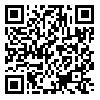BibTeX | RIS | EndNote | Medlars | ProCite | Reference Manager | RefWorks
Send citation to:
URL: http://shenakht.muk.ac.ir/article-1-2318-en.html
2- Assistant Professor, Department of Counseling, University of Kurdistan, Sanandaj, Iran ,
3- Department of Psychology, Razi University Kermanshah, Kermanshah, Iran.
Introduction: Adolescence is accompanied with challenges, crises, and tensions that may lead to risk-taking behaviors affecting individuals and their surroundings.
Aim: This study aimed to test a structural model of adolescent risk-taking based on core beliefs, assertiveness, and family communication patterns, with cognitive emotion regulation as a mediator.
Methods: This quantitative and correlational study was conducted among middle and high school students in Sanandaj during 2022–2023. A total of 229 students were selected using multistage cluster sampling. Data were collected using Core Beliefs (1992), Assertiveness (1975), Cognitive Emotion Regulation (2007), Family Communication Patterns (1997), and Adolescent Risk-Taking (2007) questionnaires. Structural equation modeling was performed using SPSS-26 and AMOS-26.
Results: Positive cognitive emotion regulation had a significant and negative effect on risk-taking (β = –0.396, p < 0.05), whereas negative strategies (β = 0.196, p < 0.05) and rumination (β = 0.439, p < 0.05) had significant and positive effects. Core beliefs, assertiveness, and conversational interaction patterns indirectly influenced risk-taking through both positive and negative cognitive emotion regulation strategies (p < 0.05).
Conclusion: Based on the findings, cognitive emotion regulation strategies had a significant mediating role in the influence of basic beliefs, family communication patterns, and assertiveness on adolescents' risk-taking behaviors. It is recommended that school-based educational programs be developed and implemented to enhance positive emotion regulation strategies and communication skills in order to reduce adolescents' risk-taking tendencies.
Received: 2024/08/23 | Accepted: 2024/09/23 | Published: 2025/08/11
| Rights and permissions | |
 |
This work is licensed under a Creative Commons Attribution-NonCommercial 4.0 International License. |




